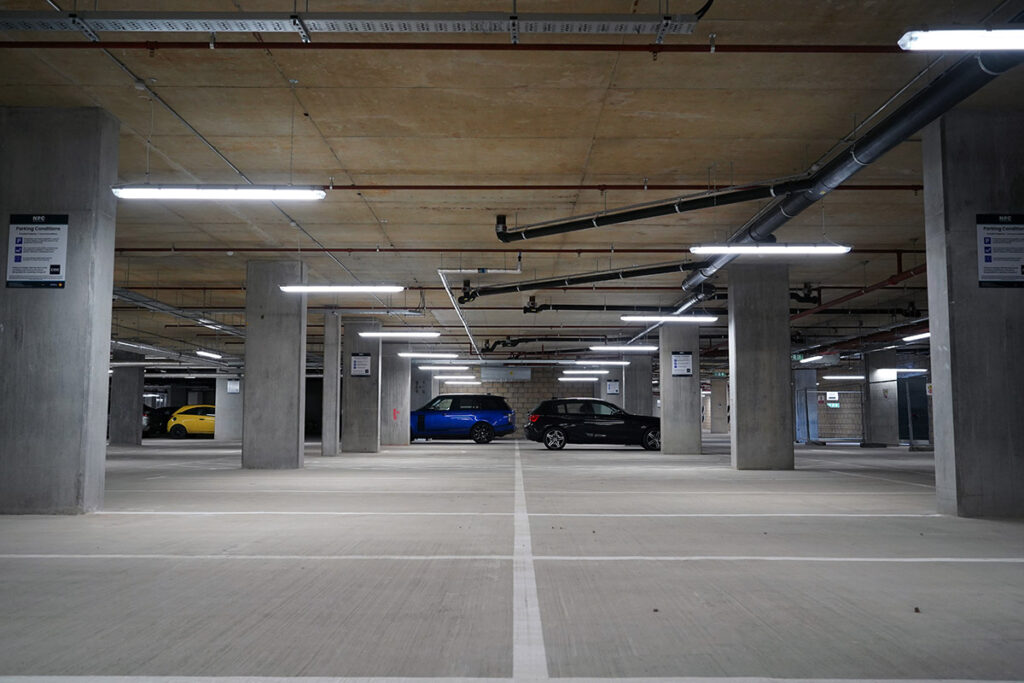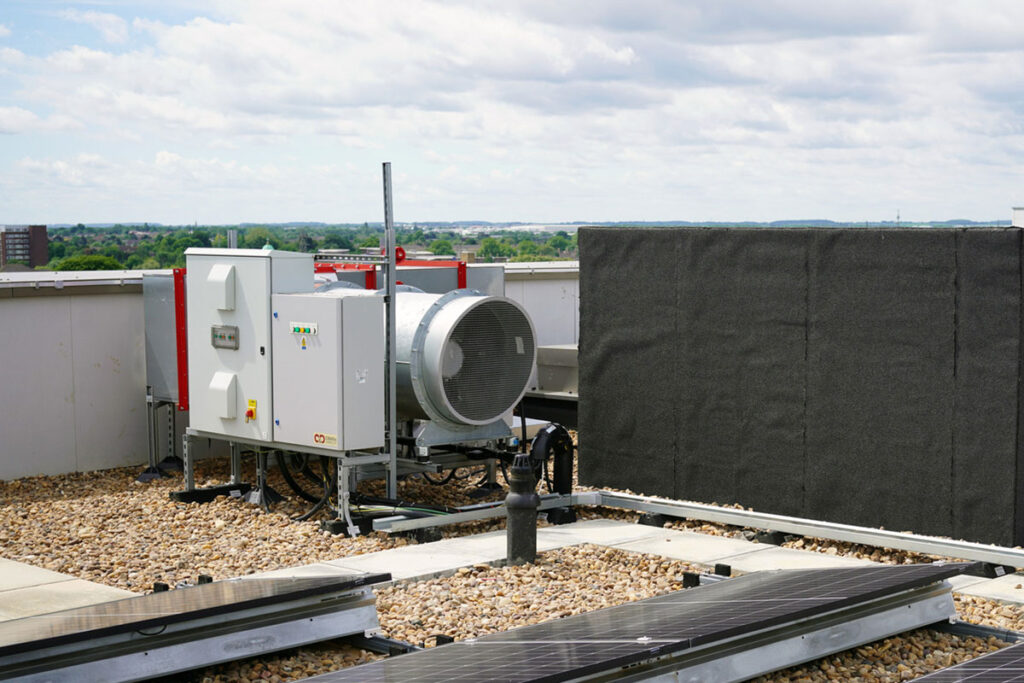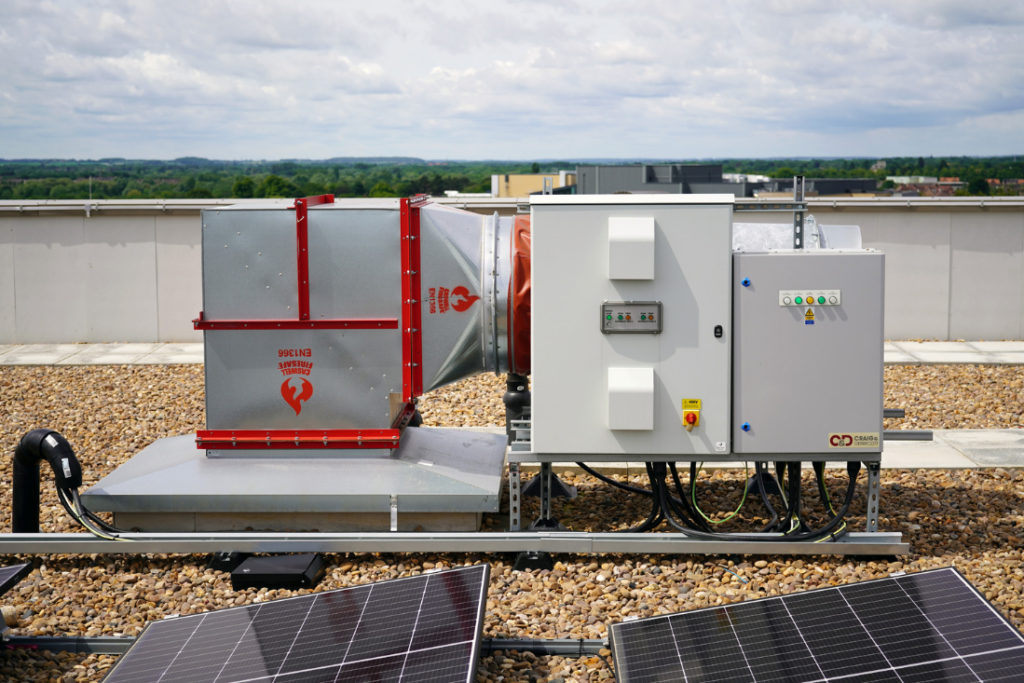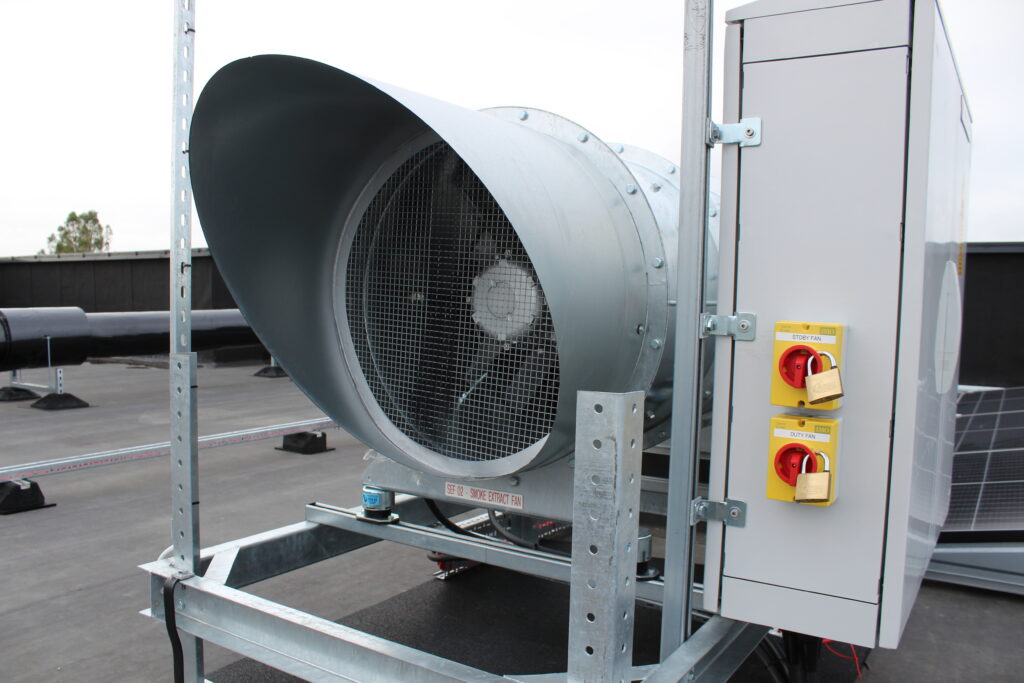Smoke control in enclosed car parks is a critical fire safety requirement. These spaces often lack natural ventilation and can accumulate both smoke and toxic gases rapidly during a fire.
This article examines the regulatory framework, best practices, and system types employed to ensure compliant and efficient car park smoke ventilation, enabling building owners to protect users, assets and obtain necessary approvals.
Why Car Park Smoke Ventilation Matters
Life Safety: Enables safe evacuation and supports firefighter access.
Toxic Gas Control: Vehicle fires produce carbon monoxide (CO), a colourless, odourless, and deadly gas.
Property Protection: Reduces heat and soot damage.
Compliance: Required by Building Regulations and local fire authorities.
Regulatory Framework
Key standards for car park smoke control include:
- Approved Document B: General fire safety guidance.
- Approved Document F: This document focuses on ventilation requirements for car parks, for both general and smoke ventilation.
- BS 7346-7: Code of practice for SHEVS in enclosed car parks.
- BS EN 12101-3: Standard for powered smoke and heat exhaust ventilators.
- BS 9999: Allows performance-based design for large car parks.
Local authorities may also impose specific airflow requirements or system types during planning or Building Control review.
Natural vs Mechanical Ventilation
Natural Ventilation
- Suitable for open-sided or partially ventilated car parks
- Relies on architectural openings
- Limited by weather and airflow consistency
Mechanical Ventilation
- Required for most underground or fully enclosed car parks
- Includes CO detection, jet fans, and extract systems
- Must be fire-rated for 300°C for 60–120 minutes
System Components
Jet Fans (Impulse Fans): Move smoke horizontally towards the extract points.
Smoke Extract Fans: Mounted on walls or ceilings to discharge outside.
CO Sensors: Detect the buildup of vehicle exhaust gases and trigger ventilation.
Control Panel & BMS Integration: Interfaces with fire alarm and site systems.
Smoke Curtains or Dampers (if required): Control smoke flow and zoning.
Best Practices in Car Park Smoke Design
Zoning: Divide large areas to improve airflow control.
CFD Modelling: Validate design assumptions and jet fan placement.
Backup Power: Ensure the system operates even during power outages.
Regular Testing: Confirm fan speed, direction, and sensor responsiveness.
Firefighter Override: Manual control in emergencies.
FDS Contracting: Car Park Ventilation Expertise
We offer complete design, supply, and installation of car park smoke control systems:
- BS EN 12101-3 compliant fan systems
- CFD validation and modelling
- CO sensor calibration and integration
- Maintenance and servicing packages
Car Park Ventilation FAQs
Can you retrofit smoke control in existing car parks?
Yes, we design retrofit systems for car parks not originally fitted with adequate smoke extraction.
What airflow rates are needed?
Typically 6 air changes/hour for daily use; 10–12 during fire conditions, depending on fire load.
How long do fans need to operate in a fire?
Smoke extract fans must typically withstand 300°C for 60 or 120 minutes (F300/60 or F300/120 rated).
Car Park Smoke Control
Car park smoke control isn’t just good practice—it’s a regulatory requirement. FDS Contracting provides proven, standards-aligned solutions to help developers, landlords, and facility managers protect life and achieve compliance.
Explore our car park smoke ventilation services or request a design assessment today.



